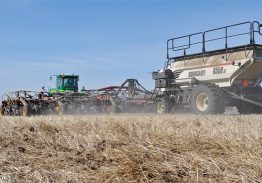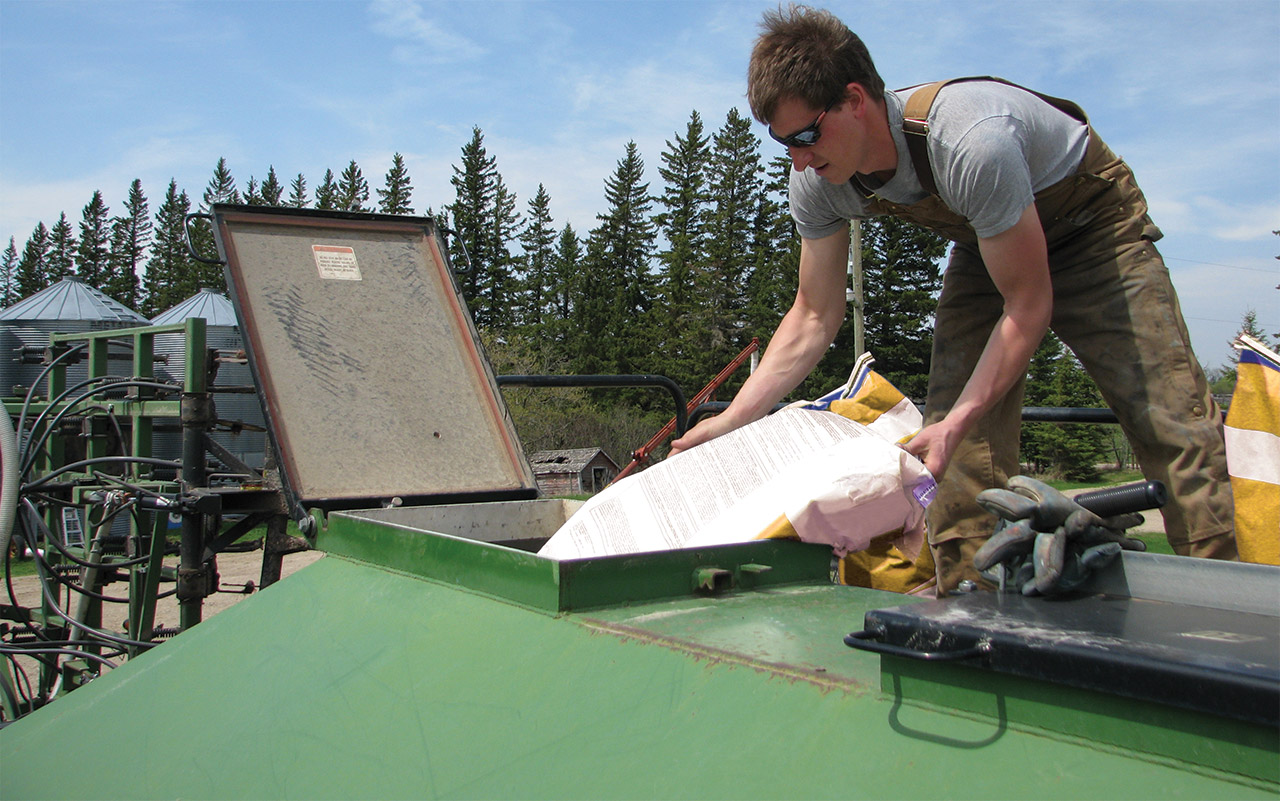Toward genetic gain of eight bushels per acre
Seed company representatives are in general agreement that significant genetic yield gains will continue. Achieving the target 8 bu./ac. gains by 2025 will be the challenge.
“I’m confident the plant breeding community can deliver an additional 8 bu./ac. — or more,” says one rep.
But another says, “Genetics alone will not support an 8 bu./ac. yield increase.”
One takes the mathematical approach: “We assume that genetic gain in canola is about one percent per year. With a gain of 0.5 bu./ac. per year, over the next 10 years we can assume genetic gain of about 5 bu./ac.”
One provides the bigger picture view: “Canola genetics will need to hit the extra 8 bu./ac. targets set out by the Canola Council of Canada (CCC) just to remain competitive as one of the crops in Western Canadian producers’ rotation.”
Key traits that will drive yield gains
Disease tolerance was the most common theme. With improved disease tolerance, more of the inherent yield potential can come through. Sclerotinia tolerance has the most potential to actually boost yields. One seed company representative said that while yield loss from sclerotinia stem rot is well documented, to date only 25 to 35 percent of canola receives a fungicide application to protect against it. Increased adoption of sclerotinia trait canola and genetic improvements in sclerotinia tolerance will help growers maximize the yield potential on their farm.
Enhanced blackleg and clubroot protection traits will be more about maintaining the current level of resistance, given the pressures of pathotype shift in some fields. Stacking strategies for blackleg, clubroot and sclerotinia will lead to better overall resistance.
Herbicide tolerance: Next generation weed control traits will play a large part in helping growers achieve canola’s full yield potential, and will provide more tools to manage weed resistance. One example is glyphosate-tolerant traits that allow for higher rates and a wider window of application.
Pod shatter tolerance: This is top of mind for many breeding organizations and more varieties with this pod shatter reduction trait will come to market. Pod drop reduction traits will also reduce losses. Average yields could be much higher if so much canola wasn’t lost during harvest. These traits could also facilitate more efficient harvest practices such as straight cutting.
Nutrient and water use efficiency: These are longer-term objectives. With breeding tools becoming more precise, these complex multiple-gene traits are more likely to be identified.
Reps also noted that while genetics will bring gains, other seed technology advancements — seed treatments, specifically — will play critical a role in continuing to advance canola yields.
Capturing current yield potential
Seed company representatives agree that overall production could increase by more consistently tapping the genetic potential of current varieties. Tempera-ture and moisture situations cause most of this yield variability year to year. Research into how canola interacts with varying yield environments would help growers manage that variation and help seed companies make better hybrid recommendations.

Even with today’s level of knowledge, careful variety selection can help growers get more out of current genetics. For example, by choosing a variety with good standability, a grower has the option to push more inputs and get a higher yield response. Trying varieties with different features side by side under local conditions is a good way to check how some of these other features may more suitably match a grower’s management system.
Choosing varieties with harvest logistics in mind is another example. Many growers are forced to begin swathing as early as 30 percent seed colour change so that they can swath all their canola acres before the last of it gets to maturity and shells out. However, cutting canola at 30 percent seed colour change could mean at least a 10 percent loss in yield potential. Choosing a combination of maturities as well as some hybrids with pod shatter reduction traits for later swathing or straight combining could improve harvest timing, and therefore yield potential.
Seed company reps outline a few other agronomy steps to extract more of the yield potential from current varieties. Set the stage with an appropriate seeding rate and seed placement to achieve a uniform stand. Seeding technology can also positively impact yields. New precision planting drills that improve emergence and stand establishment will lead to improved fungicide effectiveness and harvest timing, because the crop will be at a uniform stage through the growing season.
Nutrient management technology is another ally in improving yield potential. Some reps specified that it will become mainstream to analyze fields with high-resolution satellite imagery to determine each crop’s yield potential and to develop customized fertilizer plans. With sufficient nutrition, canola can also best withstand the stresses that may occur through the season.
Investing the time to scout fields throughout the season will generate the real time information needed to make profitable crop protection and fertilizer top dress decisions. When growers don’t have the time or expertise for accurate scouting across the farm, paying for field agronomy can bring current, specific knowledge that, when applied, will drive yield and profitability. Some seed companies also conduct farm agronomy trials that explore concepts like fertility, seeding rates and harvest management. Participating in these projects allows growers to network with these seed company agronomists and other progressive growers.
Harvest management comes up often in talking with seed company representatives. Significant yield loss is taking place in August and September every year as growers make difficult decisions to manage time, equipment and labour resources. Cutting canola prematurely can easily result in a five to 10 bu./ac. yield penalty. A higher percentage of canola swathing at 60 percent seed colour change and growers adopting straight canola harvest practices “will drive a step change in canola yields,” one rep says.
The final consideration is residue management. Better management of residue from high yielding cereal crops will help improve canola seed placement the following spring.
One rep provided this perfect closing statement: “There is so much we don’t yet understand about growing canola. The high variation in seed survival and optimal stand establish-ment are just two examples. We would encourage growers to continue to support and push for research that strengthens our understanding of this relatively new crop to Western Canada.”
Questions and responders
This article was put together based on seed company responses to four questions:
- Do you think genetics alone can contribute an 8 bu./ac. realized yield increase for Western Canadian canola by 2025?
- What genetic traits will drive
yield gains over the next 11 years? - Is there untapped genetic yield potential that growers are not realizing now?
- If yes, what would your company like to see growers do to realize that potential, recognizing that growers will also want those measures to increase profits as well?
Thank you to Shaun Vey from Syngenta; Dave Harwood from Pioneer Hi-Bred; Dave Kelner, Monsanto;
Mark Woloshyn, Dow AgroSciences; Kevin McCallum, DL Seeds; Bruce Harrison, CPS Proven Seed; Rick Wiebe, Cargill; Dave Hansen, Canterra Seeds; Rene Mabon, BrettYoung; and James Humphris, Bayer CropScience for their input.





